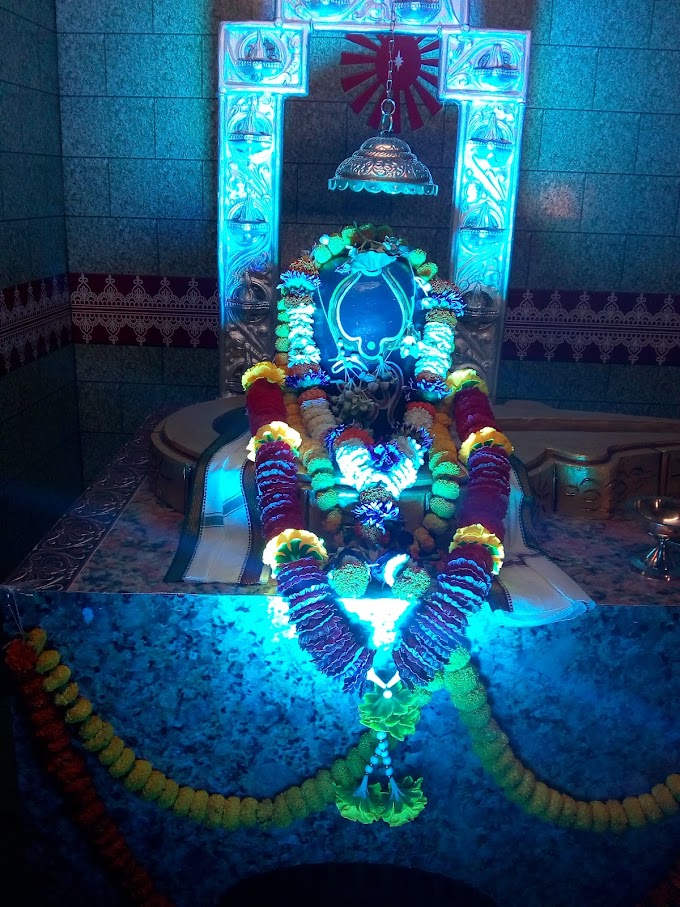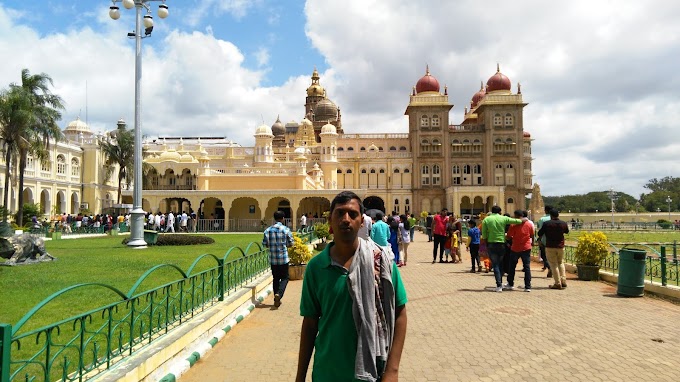SMARAT BINDUSARA
The Grate king (Chakravarti / Smarat) Bindusara was the son
of Grate king Chandragupta Maurya and second Ruler after death of Grate king
Chandragupta Maurya of India (Bharat Barsam). That time Pataliputra ( now days
it is patna) was the capital of Maurya Samraja.The Grate king (Chakravarti / Smarat) Bindusara suddenly fell ill and died in 274 BC. Emperor
Bindusara had two sons one is Sushima ( elder son) and another is Ashoka ( younger son), the son of a queen of lower status and.
The crown prince Sushima was away fending off incursions on the
northwestern frontiers and rushed back to the imperial capital Pataliputra.
However, on arrival he found that Ashoka, one of his brother, had taken control
of the city with the help of Greek mercenaries. Ashoka was the third emperor of
the Mauryan dynasty, grandson of its founder Chandragupta and son of the second
emperor, Bindusara. Upon Bindusara’s death, Ashoka and his brothers engaged in
a war of succession, and Ashoka emerged victorious after several years of
conflict.
Ashoka was still at Ujjain when Taxila revolutionary again and
Bindusara, this time sent Susima. Susima was still engaged in the campaign when
Bindusara fell ill and ordered his eldest son’s recall. The king’s ministers favored
Ashoka as successor and so he was sent for and was crowned (according to some
legends crowned himself) king upon Bindusara’s death. Afterwards, he had Susima
executed (his ministers did) by throwing him into a charcoal pit where he
burned to death. Legends also claim he then executed his other 99 brothers but
scholars maintain he killed only two and that the youngest, one Vitashoka,
renounced all claim to rule and became a Buddhist monk.
To practice the dharma actively, Ashoka went out on periodic
tours preaching the dharma to the rural people and relieving their sufferings.
He ordered his high officials to do the same, in addition to attending to their
normal duties; he exhorted administrative officers to be constantly aware of
the joys and sorrows of the common folk and to be prompt and impartial in
dispensing justice. A special class of high officers, designated “dharma
ministers,” was appointed to foster dharma work by the public, relieve
sufferings wherever found, and look to the special needs of women, of people
inhabiting outlying regions, of neighboring peoples, and of various religious
communities. It was ordered that matters concerning public welfare were to be
reported to him at all times. The only glory he sought was for having led his
people along the path of dharma. No doubts are left in the minds of readers of
his inscriptions regarding his earnest zeal for serving his subjects. More
success was attained in his work by reasoning with people than by issuing
commands.
KALINGA WAR
The kingdom of Kalinga was famous for his wealth and fighter.
For which Ashoka interested to acquire the kingdom of Kalinga(Utkal / Orissa/
Odisha) and he declared war against Kalinga. The war was started near Daya
River in Kalinga (present Odiha) for a long time. In this war finally the king
Ashoka conquered the Kalinga but he loss
many things in his life. Ashoka wherever look, he found only the death body of
persons and many women were widow in this war. After conquered when Ashok was
in battlefield, he saw buddhist monk going with charting Mantra:-
“Buddham Saranam Gacchami
Dhammam Saranam Gacchami
Saranam Saramam Gacchami”
Dhauli Dhauli is located on the bank of river Daya near
Bhubaneswar and holds great significance for the followers of Lord Buddha.
Dhauli is said to be the witness of the reform of Ashoka's character. The Daya
river is said to have turned red with the blood of the many deceased after the
battle and enabled Ashoka to realize the magnitude of horror associated with
war. He saw to it that Dhauli became an important center of Buddhist
activities. He built several Chaityas, Stupas and Pillars there. He got abodes
excavated for the recluse, instructions inscribed for officials, expounded the
main principles of dandaniti for the public, provided special status to his new
kingdom including the Stupas at Dhauli. There are two temples at Dhauli. One of
Vairangeswar Mahadev and Dhabaleswar Mahadev. know more:
BUDDHIST CULTURE
After the Kalinga War, Ashoka fell guilty and from that days he
took oath to adopt Non-violation adaptation path. , the Empire knowledgeable
nearly half a century of peace and security. Mauryan, India also enjoyed an era
of social harmony, religious transformation and expansion of the sciences and
of knowledge.
Buddhist texts mention that he killed ninety-nine brothers and
only spared his full brother Tissa. Hundreds of loyalist officials were also
killed; Ashoka is said to have personally decapitated five hundred of them.
Having strengthened his power, he was finally crowned emperor in 270 BC.
Takshashila was a prosperous and geopolitically important city
and historical evidence proves that by Ashoka's time, it was well-connected to
the Mauryan capital Pataliputra. The history of the legend about Ashoka's
involvement in the Takshashila rebellion may be corroborated by an
Aramaic-language inscription discovered at Sirkap near Taxila. The evidence of
Ashoka's connection to the city may be the name of the Dharmarajika Stupa near
Taxila; the name suggests that it was built by Ashoka.
The information about Ashoka comes from Buddhist legends, which
present him as a great, ideal king. These legends appear in texts that are not
contemporary to Ashoka and were composed by Buddhist authors, who used various
stories to illustrate the impact of their faith on Ashoka. This makes it
necessary to exercise caution while relying on them for historical information.
The first evidence of the religion spreading outside India
coincides with Ashoka’s rule as he sent emissaries to Sri Lanka and an area
called Suvarnabhumi, which could be in modern Myanmar or Thailand. Ashoka’s
son, monk Mahinda, converted King Devanampiya Tissa and other nobility in
modern day Sri Lanka to Buddhism. King Tissa built the Mahavihara monastery which
became the main centre of Buddhism in the island nation. After Sri Lanka, it
took more a thousand years for Buddhism to become a leading religion in
Myanmar. There are two main accounts – traditional legends say that Ashoka’s
son Kushtana founded the Khotan kingdom around 240, in the present day Xinjiang
province of China and introduced the religion, while other accounts indicate
that it was Kaniska, who ruled over northern India, Afghanistan and parts of
central Asia, encouraged the spread of the religion. Ashoka's written a book in
title “Devanampiya” (which means "Beloved of the Gods")
BUDDHIST CULTURE IN SRI LANKAN
According to Sri Lankan tradition, Ashoka's father Bindusara was
a devotee of Brahmanism, and his mother Dharma was a devotee of Ajivikas. The
Samantapasadika states that Ashoka followed non-Buddhist sects during the first
three years of his reign. The Sri Lankan texts added that Ashoka was not happy
with the behaviour of the Brahmins who received his alms daily. His courtiers
produced some Ajivika and Nigantha teachers before him, but these also failed
to impress him.
According to the Sri Lankan texts Mahavamsa and the Dipavamsa,
Ashoka ascended the throne 218 years after the death of Gautama Buddha, and
ruled for 37 years. The date of the Buddha's death is itself a matter of debate
and the North Indian tradition states that Ashoka ruled a hundred years after
the Buddha's death, which has led to further debates about the date.
Northern and Southern Buddhist, the books tell the story of King
Ashoka with of course, significant differences as per religious traditions of
North (Mahayana) and South (Theravada). Both groups of writings point out how
Ashoka was a ruthless ruler before he turned Buddhist. He was known to have
killed almost all his hundred or so step brothers who could have been possible
claimants to his throne. After becoming Buddhist he became known in name of
“Dharma Ashoka.”
BUDDHIST CULTURE IN CHINA
The religion was actively propagated in China in the first
century BC. Legends say that Han empire Mingdi (57/58 to 75/76) dreamt of a
flying golden deity and subsequently dispatched emissaries to India who
returned to China with the Sutra in forty two sections and then Buddhism was
introduced. The golden period of Buddhism came during the Tang dynasty rule
from 618-907.
According to Tibetan tradition, the religion was first
introduced during King Srong-brtsan-sgam-po’s regime from 627 to 650. After the
council held at Bsam-yas monastery between 792-794. During the 11th and 12th
century, many Tibetans travelled to India to acquire and translate Buddhist
texts. The golden period came when the Mongols got influenced by Tibetan Buddhism
and in the middle of the 17th century, they established the fifth Dalai Lama as
the theocratic ruler of Tibet.
















